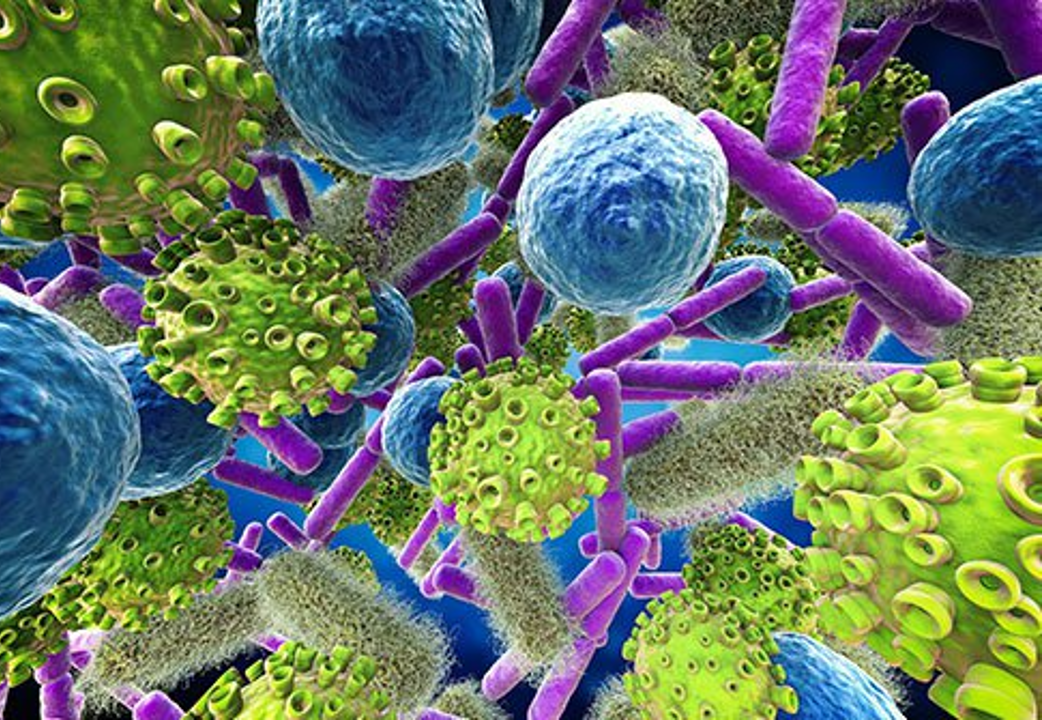
Medical Microbiology
Course Cost : $ 1381
VigyanCentral One-Time Portal Registration Fee : $ 100
(Only for non-registered users)
Course Description
The course will take you over the pathogenic microorganisms which infect man causing various infective syndromes like Meningitis , Encephalitis etc
The course is basically targeting the medical graduate studying in the 2nd year of the medical curriculum. However it could also be useful to doctors who would like to refresh their knowledge about microbes. It will cover the causative organisms, pathogenesis, laboratory diagnosis and appropriate antimicrobial therapy for microorganisms causing human infection. An increase in the Emerging and Reemerging diseases makes it important to learn about the pathogens which have to be battled against so we are better prepared to manage these diseases.
The course will extend over 52 weeks and will include lectures , group discussions and MCQ tests at regular intervals. There will also be a one to one mentoring over whats app.
The topics covered will be:
1. Introduction to Microbiology and historical aspects. Introduction to bacteria, viruses & Bacteriophages, fungi,parasites, host parasite relationship, normal flora.
2. 2 Morphology of bacteria, microscopy, Gram staining, Z-N staining, stool examination- routine microscopy
3. Types of infection, source/ reservoir of infection, modes of transmission, pathogenicity, definition of prevalence,incidence, types of infectious diseases (endemic, epidemic, pandemic, sporadic)
4. Methods of sterilization and disinfection, their application in the laboratory, clinical and surgical practice
5. Mechanism of drug resistance, methods of antibiotic susceptibility testing, definition of MIC, MBC, break points, interpretation of antibiotic susceptibility test report, antimicrobial audit/use, antibiotic policy, antimicrobial stewardship.
6. Immunity
7. Antigen, antibodies, immune response and complement, antigen antibody reactions
8. Vaccines, universal vaccination program, immunoprophylaxis, immunotherapy
9. Hypersensitivity, autoimmune disorders and immunodeficiency states, laboratory methods used in their detection
10.Immunological mechanisms of transplantation and tumor immunity
11. Rheumatic Heart Disease-definition, etiological agent, pathogenesis, clinical features and laboratory diagnosis.
12.Streptococci and Infective endocarditis- classification, etiological agents, pathogenesis, clinical features and laboratory diagnosis.Streptococcus viridans, Streptococcus mutans, HACEK
13. Anemia-definition, etiological agents, pathogenesis, clinical features and laboratory diagnosis. Hookworm, Trichuris trichiura
14.Kala azar, malaria, filariasis and other common parasites prevalent in India - Schistosomes, Fasciolopsis buski,Paragonimus westermani,
15.Microbial agents causing diarrhea and dysentery- epidemiology, morphology, pathogenesis, clinical features andlaboratory diagnosis of Shigella, Campylobacter, . Vibrio, salmonella, E. histolytica, Giardia, B. coli, H. nana, Taenia Intestinal nematodes, Norwalk virus and Rota virus, Coronavirus
16.Septicemia, Enteric fever and Food poisoning Salmonella -Morphology, pathogenesis, clinical features, laboratory diagnosis.
17.Food poisoning- etiological agents, pathogenesis, clinical features and laboratory diagnosis.Staphylococci, Cl. botulinum, Bacillus cereus
18. Acid peptic disease (APD)- etio-pathogenesis, clinical course laboratory diagnosis and management H. pylori
19. Viral hepatitis- etiological agents, pathogenesis, clinical features and laboratory diagnosis. Hepatitis A, B, C, D, E,Cytomegalovirus, Epstein-Barr virus, HSV, VZV, Measles, Rubella
20.MI4.3 Skin and soft tissue infections- etiological agents, pathogenesis, clinical features and laboratory diagnosis.
21.Anaerobic infections- etiological agents, pathogenesis, clinical features and laboratory diagnosis. Spore bearing and non-spore bearing anaerobes, Clostridia
22.Bone and joint infections- etio-pathogenesis, clinical features and laboratory diagnosis. Prosthetic joint infections,Staphylococci, Acinetobacter
23.Mycetoma, Leprosy, Herpes.
24.Meningitis- etiological agents, pathogenesis, clinical features and laboratory diagnosis. Meningococci, Leisteria, H.influenzae, Cryptococcus neoformans
25.Encephalitis- etiological agents, pathogenesis, clinical features and laboratory diagnosis. Primary amoebic meningoencephalitis,viral encephalitis, Japanese encephalitis, Rabies, Aseptic meningitis -ECHO viruses
26.Upper respiratory tract infections- etiological agents, pathogenesis, clinical features and laboratory diagnosis. Orthomyxo virus, Paramyxo virus, Adenovirus, Rhinovirus, Diphtheria, Bordetella
27. Lower respiratory tractinfections-etiological agents, pathogenesis, clinical features and laboratory diagnosis Streptococcus pneumonia,
28.Mycobaterium tuberculosis
29.Urinary infections- etiological agents, pathogenesis, clinical features and laboratory diagnosis Urinary tract infections- etiological agents, pathogenesis, significant bacteruria , clinical features and laboratory diagnosis. E. coli, Klebsiella, Proteus
30.Non-gonococcalurethritis, Trichomoniasis, . Bacterial vaginosis
31. Sexually transmitted infections- etiological agents, pathogenesis, clinical features and laboratory diagnosis. Syphilis,Gonorrhea,
32.Viral Sexually transmitted infections Herpes, Calymmatobacterium, HPV, Molluscum contagiosum
- 33.HIV- epidemiology, the etio- pathogenesis, evolution, complications, opportunistic infections, diagnosis, prevention and the principles of management of HIV
34.Zoonotic diseases- etiological agents, mode of transmission, pathogenesis, clinical features laboratory diagnosis and prevention-Brucella, Yesinia, Leptospira, Anthrax and Arbo viruses, Hydatid disease
35. Opportunistic infections- etio-pathogenesis, factors contributing to the occurrence of OI, laboratory diagnosis -Toxoplasma, Pneumocystis jiroveci, Cryptospora, Isospora,
36.Oncogenic viruses in the evolution of virus associated malignancy
37.Healthcare Associated Infections (HAI)- definition, types, factors that contribute to the development of HAI and the methods for prevention- Pseudomonas, MOTT, Antibiotic associated diarrhea
38. Infection control practices and use of Personal Protective Equipments (PPE) and hand hygiene &Bio medical waste management.
39.Burkholderia, Mycoplasma, Borrelia, Actinomyses & Nocardia, Rickettsia, Bartonella, Ehrlichia,
40.Chlamydiae, Ebola virus, Slow viruses
Note : Please click on to PURCHASE NOW and login to purchase the course. If you don't have an account, create one.